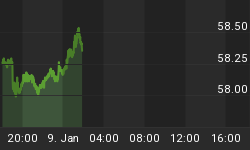Bitcoin has come a long way in a short amount of time, and of course it has experienced its share of growing pains. But overwhelmingly, there is an uptrend of acceptance from retailers, individual merchants, mega-corporations, and now, niche markets such as the art world.
Bitcoin in the retail world
While the history of Bitcoin as a method of payment obviously dates back much further than 2014, it was then when retail heavyweight Overstock.com began accepting the cryptocurrency. This was a landmark event in Bitcoin’s history, signaling that the revolution was gaining speed. It paved the way for the likes of Microsoft, Dell, Expedia, you name it. Three years later, you can even buy a house with Bitcoin.
Even though there are many different ways to accept and spend Bitcoin, the movement to push cryptocurrency payments into the mainstream has been riddled with hang-ups. From tax concerns, payment processing, accounting, and most notably, volatility.
Volatility is one of the factors which has kept retailers and investors on edge. A single piece of news can create a rush for the door, something that has been especially noticeable in the past two weeks. Hinging on the development of the Chinese banhammer taking aim on Bitcoin exchanges, the price of the cryptocurrency has seen a freefall from its all-time high of US$5000 to a price of ~US$3500 at the time of publishing.
Overstock’s CEO Patrick Byrne explained the company’s policy regarding its cryptocurrency payments: “What we do now is 50% gets turned into U.S. dollars and 50% gets held as bitcoin.” As HODLing is not always an option for businesses who need liquidity to pay employees, expenses, or order merchandise, it has prevented many from adopting Bitcoin as a payment method.
Overstock’s policy, however, isn’t without a little self-awareness. While the company is currently holding on to its Bitcoin, Byrne explains, “If people would start using it, it would get more liquid, more valuable. I wish people who held bitcoin would take 10% and say ‘I am gonna spend this to stimulate the market.’”
Fortunately for Byrne, there are new platforms popping up every day. Now, Overstock’s CEO even has the opportunity to ‘stimulate the market’ by purchasing a piece of fine art from a number of galleries or online marketplaces which have begun accepting Bitcoin.
Art goes blockchain
The art world has been dipping its toes into Bitcoin and blockchain technology for some time, but hasn’t quite taken the dive.
In 2015, the MAK- Austrian Museum of Applied Arts became the first museum to purchase a piece of art using Bitcoin. The piece, Dutch artist Harm van den Dorpel’s Event Listeners. In this purchase, van den Dorpel’s digital piece was registered with a startup – Ascribe.io – which allowed the artist to create a cryptographic ID facilitating the authentication, ownership, and transfer of his artwork.
For curators and creators alike, blockchain technology has brought art, especially digital art, into an entirely new light. “There’s a lot of good digital artwork that no one knows how to monetize. For artworks to be desirable, to be valuable, it’s very important for a work to be scarce,” said van den Dorpel.
Brokers are also taking advantage of blockchain technology. Using digital ledgers, one broker has devised a plan to let anyone participate in the buying and selling if fine art.
Marcelo Garcia Casil, chief executive and co-founder of Maecenas, has created an online marketplace which allows participants to purchase shares of multi-million-dollar pieces of fine art. The shares can be bought and sold within the marketplace on the Ethereum blockchain. Casil noted: “The old auction houses like Christie’s and Sotheby’s have controlled the art market for centuries, so we think the opportunity for disruption is huge.”
Indeed, the opportunity for disruption is clear, but what about that friend from college, you know, the starving artist, passionate about his work, but still struggling to get by? There’s room for him too.
The art world is often diluted by high prices, speculation-based purchases, and a general attitude of exclusion. New artists are left out, and those not in the top 1% who simply want something interesting, and perhaps meaningful, to hang on their wall or feature in their living room are left without options outside of mass produced Wal-Mart art.
Now, there are entire online marketplaces to facilitate the buying and selling of affordable and unique artwork – payable in Bitcoin and with secure escrow services using blockchain technology. One of the most prominent examples is OpenBazaar, a peer to peer ecommerce site which completely eliminates the middleman from the transaction.
Using these services, your college friend can list and sell his artwork securely and, in many cases, without fees. And you, the casual consumer, can safely purchase these pieces using Bitcoin or other cryptocurrencies.
These new platforms are quickly impacting creative markets. There are now marketplaces to sell art, music or design full of incredible pieces suited for a variety of tastes and profiles.
While Coinmap in Europe is practically completely red, indicating a huge wave of adoption from is underway, it is also positive sign that niche markets are jumping into the mix. As the practice of accepting cryptocurrencies as a payment grows and online marketplaces evolve, there are new opportunities to both spend and earn Bitcoin popping up every day. In time, that volatility problem mentioned earlier will impact the crypto-economy less and less.
By Michael Kern via Cryptoinsider.com
















